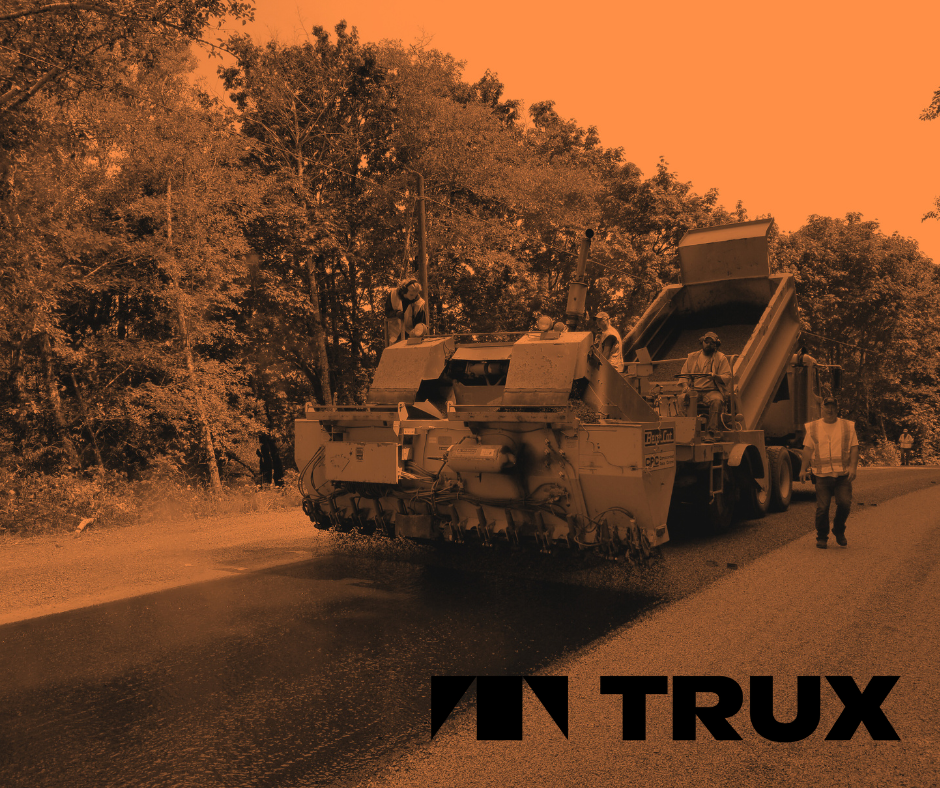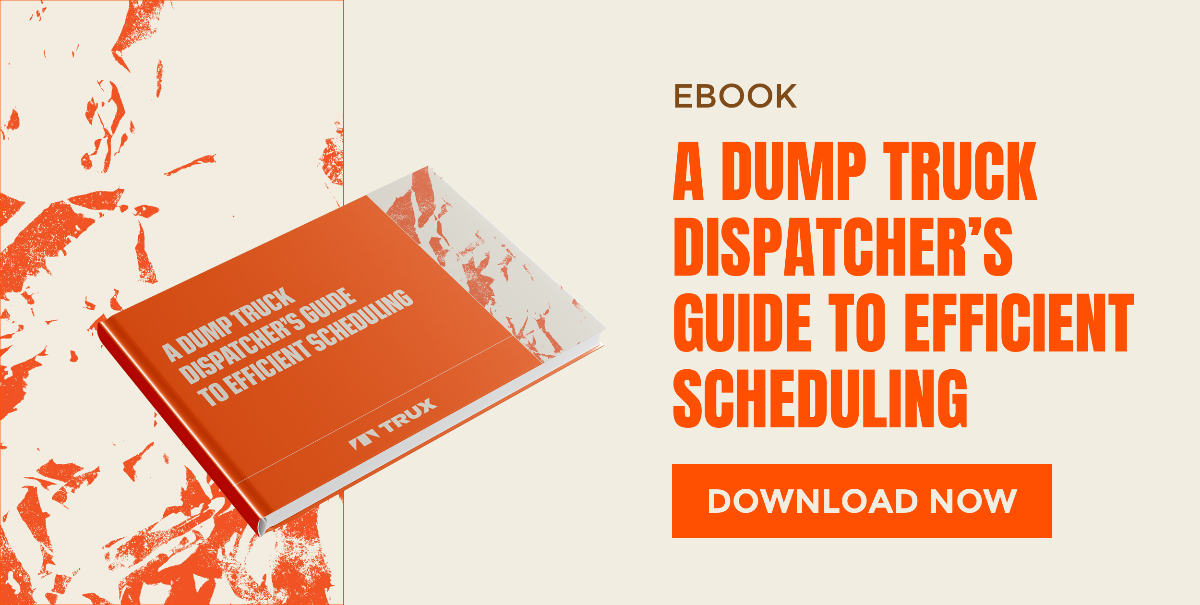7 min read
Adapting to Change: How to Foster Agility in Construction Projects
By: TRUX Team on Jan 16, 2025 1:35:42 PM

The construction industry is constantly evolving. From unpredictable weather to shifting project timelines and material shortages, contractors and project managers face daily challenges that can disrupt progress and affect profitability.
In such a dynamic environment, sticking to rigid processes often results in costly delays and inefficiencies. On the other hand, companies that embrace adaptability—staying flexible and responsive to change—position themselves to keep projects on track, control costs, and stay competitive.
Agility in construction isn’t just a buzzword; it’s a proven strategy for navigating the complexities of modern job sites. By integrating strategic planning, the right digital tools, and a culture of flexibility, contractors can better respond to unexpected shifts without sacrificing productivity.
In this blog, we’ll explore why agility is essential in construction, break down the key components of an agile project, and share practical strategies—including the use of technology—to help you foster adaptability across your projects.
Click a topic below to jump to the relevant section:
Why Agility Matters in Construction
Key Components of an Agile Construction Project
Strategies to Foster Agility in Construction Projects
Real-World Example of Agility in Action
Why Agility Matters in Construction
Construction projects rarely go exactly as planned. Unforeseen challenges—like sudden weather shifts, material shortages, labor constraints, and equipment breakdowns—can disrupt progress, delay timelines, and inflate costs. In such a high-stakes environment, rigid processes can be a recipe for inefficiency.
When a project lacks flexibility, even minor disruptions can lead to cascading delays. A delayed material delivery, for example, can hold up multiple phases of a project, causing costly downtime and frustration among crews. Without the ability to pivot quickly, teams may find themselves scrambling for solutions, often leading to rushed decisions and compromised quality.
On the flip side, fostering agility can keep projects moving forward despite unexpected hurdles. Agile construction management means:
- Faster Decision-Making: Teams can make informed adjustments on the fly.
- Minimized Downtime: Quick responses reduce delays and keep equipment and labor productive.
- Improved Productivity: With better resource coordination, work progresses smoothly, even when plans shift.
Adopting an agile approach helps construction teams stay proactive, ensuring challenges are met with solutions, not setbacks.
Key Components of an Agile Construction Project
Creating a more adaptable construction project requires more than just a willingness to adjust—it demands a structured approach that prioritizes flexibility, communication, and proactive management. Here are the core components that make a construction project agile:
1. Flexibility in Planning:
Rigid project plans can quickly fall apart when unexpected challenges arise. Agile construction involves breaking projects into manageable phases with contingency options for each stage. This modular approach allows teams to adjust timelines, resources, or priorities without derailing the entire project.
2. Clear and Open Communication:
Effective communication is critical when adapting to change. Agile projects rely on open channels between project managers, contractors, haulers, and suppliers. When changes occur, all stakeholders should be informed immediately, ensuring decisions are made based on real-time information rather than assumptions.
3. Resource Management and Adaptability:
Labor availability, equipment access, and material deliveries can fluctuate. Agile teams prepare for these shifts by maintaining backup resources, cross-training staff, and using software to track resource use in real time. This proactive approach helps avoid bottlenecks and minimizes downtime.
4. Real-Time Visibility: Without real-time data, it’s difficult to make informed decisions. Tools like Trux’s digital load tracking and GPS visibility empower contractors to monitor job progress, make on-the-fly adjustments, and ensure that haulers and materials are where they need to be.
5. Data-Driven Decision Making:
An agile construction team leverages data to improve performance. Tracking metrics like delivery times, equipment usage, and cycle efficiency provides insights for continuous improvement. Data-driven decision-making not only helps react to current challenges but also improves future project planning.
Strategies to Foster Agility in Construction Projects
Adapting to change in construction requires more than just a mindset shift—it involves implementing strategies that promote flexibility across teams, processes, and technology. Here’s how to create a more agile work environment:
1. Embrace Technology for Real-Time Management:
Digital tools are game-changers when it comes to managing construction logistics. Platforms like Trux offer features such as real-time GPS tracking, digital dispatching, and paperless ticketing, helping project managers stay updated on material deliveries and truck activity without constant check-ins. This level of visibility enables faster decision-making and reduces downtime.
2. Flexible Scheduling and Resource Allocation:
Delays are often inevitable, but they don’t have to derail an entire project. Agile teams build in buffer periods and create flexible work schedules that allow them to adapt to changing conditions. Maintaining access to additional haulers or labor through a network of third-party resources can prevent costly standstills.
3. Streamline Communication:
Miscommunication can lead to errors and lost time. Implementing centralized communication platforms—whether through a project management app or digital dispatching tool—ensures all team members have real-time updates. Clear communication of schedule changes, delivery delays, or resource adjustments keeps everyone aligned and responsive.
4. Prioritize Proactive Risk Management:
Rather than reacting to issues after they arise, proactive risk management involves identifying potential challenges early. Agile teams regularly review project timelines, supplier reliability, and workforce availability to anticipate problems before they impact the project.
5. Use Data to Drive Decisions:
Data transparency helps teams make smarter adjustments mid-project. By using performance metrics—like delivery completion rates or hauler productivity—contractors can assess efficiency and make informed adjustments to improve project flow.
6. Encourage a Culture of Adaptability:
True agility starts with your team. Encourage a culture where workers feel empowered to suggest improvements, adapt processes, and respond confidently to changing circumstances. This includes regular training on new tools and strategies for effective on-site problem-solving.
Real-World Example of Agility in Action
3531 Trucking Inc., a veteran-owned hauling company in San Dimas, California, faced challenges managing over 200 haulers using manual processes. Coordinating such a large fleet through text messages made it difficult to adapt to daily changes efficiently.
The Solution:
By adopting Trux’s digital platform, 3531 Trucking transformed their operations:
- Remote Dispatch Management: Their dispatcher could manage hauler schedules and make adjustments from anywhere, improving response times.
- Real-Time Tracking: Live GPS visibility allowed proactive adjustments to truck assignments, reducing idle time.
- Digital Paperwork Management: Haulers could submit load slips and punch in digitally, minimizing administrative delays.
The Results:
Since implementing Trux, 3531 Trucking has:
- Improved Agility: Faster decision-making and scheduling adjustments kept operations flexible.
- Reduced Paperwork: Digital processes cut administrative tasks, freeing up more time for core operations.
- Enhanced Customer Experience: Real-time tracking provided better visibility and communication with clients.
This case highlights how leveraging technology can drive agility, keeping operations efficient and responsive to daily challenges.
Conclusion
In today’s unpredictable construction landscape, agility is essential for keeping projects on schedule, controlling costs, and minimizing downtime. By embracing flexible planning, proactive communication, and resource management strategies, construction businesses can stay ahead of unexpected challenges.
Technology plays a key role in fostering this adaptability. Tools like Trux provide real-time tracking, digital dispatching, and automated reporting, empowering teams to make informed decisions quickly and keep operations running smoothly.
By prioritizing agility, contractors can not only reduce disruptions but also improve efficiency, jobsite productivity, and customer satisfaction. Ready to take the next step? Explore how Trux can help your business stay flexible and competitive with powerful logistics management tools.
Related Posts
Effective Project Management: Key to Staying On Schedule and Within Budget
When it comes to dump truck operations, efficiency isn’t just a goal—it’s the difference between...
Top 5 Features to Look for in a Hauling and Delivery Management Platform
Managing material deliveries shouldn't be a constant headache. Between coordinating haulers,...
Digital Dispatching: The Future of Construction Fleet Management
Managing dump trucks has never been easy. Traditional dispatching methods—relying on phone calls,...

